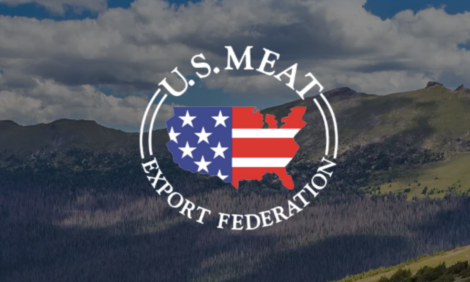



New Test Developed for Piglet Diarrhoea Virus
US - A team at the University of Minnesota's Veterinary Diagnostic Laboratory (VDL) has unveiled a rapid, reliable and inexpensive test for the Porcine Epidemic Diarrhoea virus (PEDv).All of a sudden, an outbreak of diarrhoea appears in a herd of hogs. Any number of infectious agents could be sickening the pigs, but if it is Porcine Epidemic Diarrhoea virus (PEDv), it will, if unchecked, wipe out all piglets under two weeks old.
Quick action is necessary to defend against PEDv, which has recently entered the Western Hemisphere and struck herds in at least 17 states, including a handful of cases in Minnesota. But because PEDv may masquerade as a more benign pathogen, there is a crying need for a quick and definitive test.
In June 2013, just 12 weeks after being asked to help with the problem, a team at the University of Minnesota's Veterinary Diagnostic Laboratory (VDL) unveiled a rapid, reliable and inexpensive test for the virus. While no cure exists, a positive test serves notice that a farm is infected so stronger biosecurity measures can be put in place.
It may not kill mature pigs but even a farm with no piglets could suffer economically from PEDv.
"We don't know if there's a slow-down in growth - we've not seen one yet," said James Collins, director of the VDL. "That's the biggest threat to the swine industry.
"Or, it could enter a mature herd silently and then spread through manure. There isn't enough knowledge and biosecurity to control its spread."
The economic repercussions have echoed down the continent. Mexico has closed its border to pork - "a huge cost," Dr Collins said - and Canada is contemplating actions, although pork tends to move southward.
If farmers notice diarrhoea, their first step should be to contact the herd veterinarian. A vet trained to recognise the disease clinically will collect samples of faeces, faecal swabs or other matter, using guidelines from the VDL if necessary, then mail it to the VDL.
The test searches for genetic material unique to the virus and also detects a second virus called TGE, all for less than US$50. Farmers who visit the VDL website can get the results at a secure site within 24 hours.
"We're accessible in the United States, Canada, and wherever else you have overnight mail," said Dr Collins.
Focus on Future
The virus is believed to spread from farm to farm through the transport system. Infected manure that contaminates a truck or the driver's clothes can pass PEDv to another farm by mingling at a common point of transport or a slaughter plant, Dr Collins explained. Current biosecurity measures, though sufficient for controlling TGE, haven't stopped PEDv, he added.
The industry is studying factors like the stability of PEDv - a USDA report says it can survive for 28 days in contaminated feed - and the recovery time for an infected herd to get back to normal production. Industry funding is going to researchers at the University of Minnesota, Kansas State, South Dakota State and Iowa State, which share technology, including the test, and information.
Among other research, the National Pork Board is funding a joint University of Minnesota-Kansas State project to develop a second test for PEDv. It would detect antibodies to PEDv - and thus exposure to the virus - which would catch the 'silent' cases where the virus spreads through a mature herd but does not kill.
With a "small" hog farm now numbering about 2,000 animals, the PEDv crisis is another sign that "agriculture is changing so fast, it's a challenge to keep up," Dr Collins continued. To do so, researchers have had to band together.
"This virus is forcing everybody to understand the weaknesses in the transport system and the value of pooling resources, instead of competing to defeat this," he added. "We want to be 'good competitors,' who share data."








